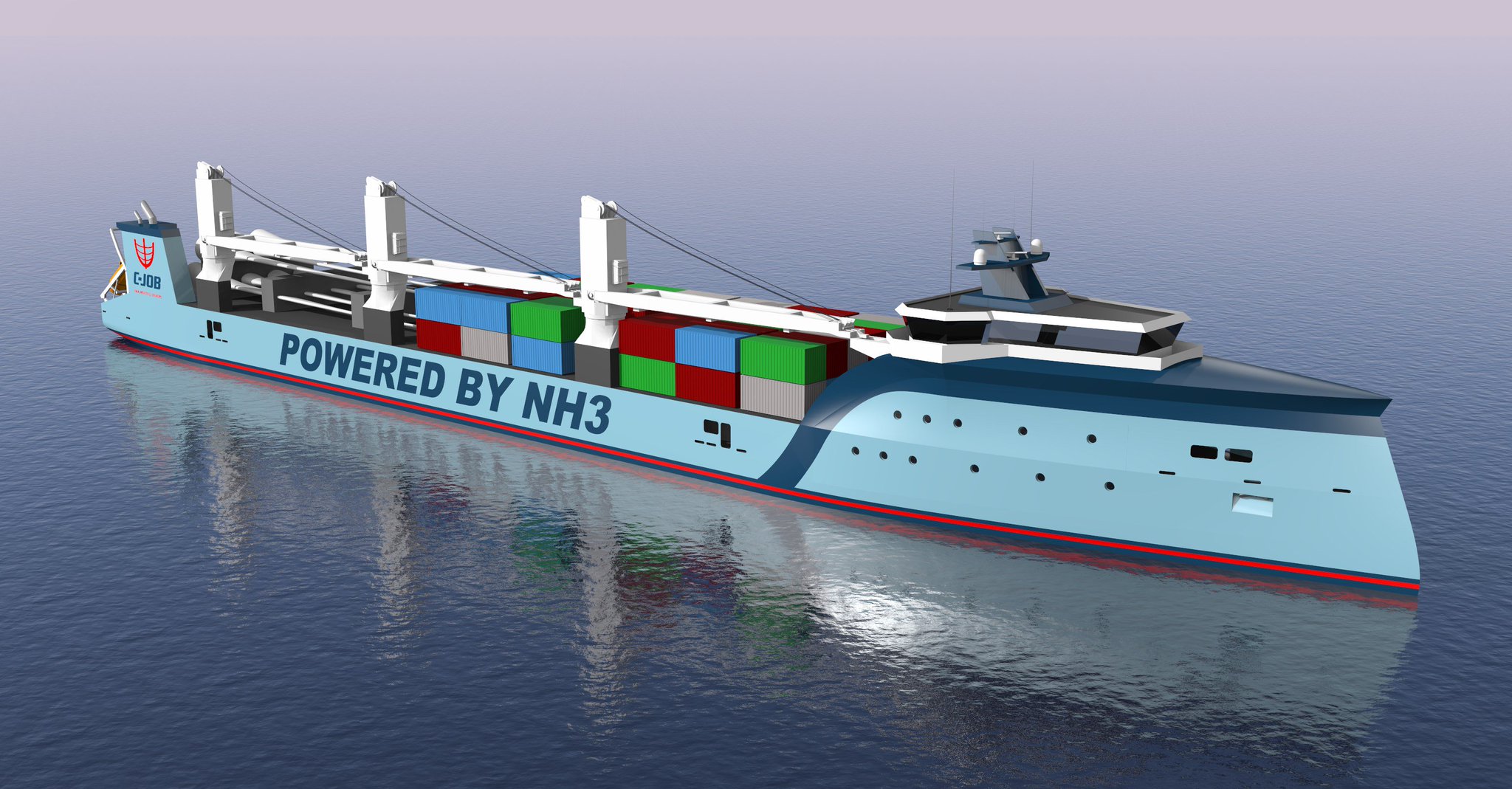The Maritime Industry Begins Assessment of Ammonia as a Fuel
By Trevor Brown on October 05, 2017
Ammonia Energy Anniversary Issue: a “top five” development in economic implementation
In the last 12 months …
The maritime industry has begun assessing ammonia as a carbon-free fuel, for internal combustion engines and fuel cells. This marks the first time since the 1960s, when NASA used ammonia to fuel the X-15 rocket plane, that industry players have seriously considered ammonia for transport applications.
The year “Bunker Ammonia” became a thing
There are many examples of ammonia fuel being used safely in passenger cars and public transport, from the 1870s to today (most recently, a sports car in Italy and a commuter bus in China). However, despite the fact that I know of no examples of ammonia fuel being used unsafely (anywhere, ever – please contact me if I’m wrong), safety is often perceived as a road-block to using ammonia as a transport fuel. This perception may now be changing thanks to the fuel supply crisis facing the maritime freight industry, which is desperately searching for a carbon-free liquid fuel.
The maritime industry presents a unique opportunity for ammonia fuel advocates: here is a professionalized workforce, where all fuel users could be trained in ammonia safety; there would be no need to site fueling infrastructure near populated areas, reducing risk impacts; and if any ammonia leak should occur, there is a plentiful supply of the necessary response: water.

To meet its self-imposed emission reduction targets, the maritime industry has now realized that it needs to choose “either a radical change in fuel or a radical change in speed.” Until this year, the accepted wisdom had been that the industry needed to invent esoteric new carbon-free fuels “which do not yet exist.” Now, however, researchers and naval architects across Europe are analyzing the potential of ammonia.
The first ammonia-specific maritime fuel data should be published by researchers in the UK this year; an industry-academia-NGO collaboration is growing in Europe, with initial results expected in 2018; and the Japan SIP “Energy Carriers” program has taken up this idea as one of its research themes, with results expected in 2020.
The stakes are high: the maritime industry emits 2.33% of global emissions, roughly one gigaton of CO2 each year, and its sulfur emissions pose a significant health risk. However, the industry is self-regulating to a large extent and it appears to be moving in the right direction. This is also an industry intimately connected to the global ammonia value chain: only last month, ammonia producer Yara tested its battery-powered freight vessel, “Yara Birkeland,” which it celebrates as “The first ever zero emission, autonomous ship … a game-changer for global maritime transport.” The next logical step would be to develop an ammonia freighter powered by its own cargo.
The adoption of ammonia fuel by the maritime industry, even on a small-scale, would cause a ripple effect on the commercialization of the broader ammonia energy value chain. Ammonia engines and fuel cells would become proven technologies; demand for carbon-free fuel would de-risk global investments in renewable ammonia plants; and relevant risk evaluation criteria, safety procedures, and regulations would become established at regional and international levels.
Ammonia Energy reporting
- June 2017: Bunker Ammonia: momentum toward a “sustainable and future-proof” maritime fuel
- March 2017: Bunker Ammonia: carbon-free liquid fuel for ships
A year in review
To mark the first anniversary of Ammonia Energy, we reviewed the most important developments from the last 12 months. This “top ten” list spans two areas: five are technology advances that will arguably produce the most important opportunities for ammonia energy, and five are economic implementation steps that are arguably the most significant moves toward real-world deployment.
Technology advancement:
- The Dawn of Bio-Ammonia
- Advances in Ammonia-Fired Gas Turbines Open Up Major Use Case
- Overcoming the Selectivity Challenge in Electrochemical Ammonia Synthesis
- Progress toward Ammonia-to-Hydrogen Conversion at H2 Fueling Stations
- Development of Direct Ammonia Fuel Cells
Economic implementation:
- Yara’s Solar Ammonia Plant is a Key Step toward Global Trade in Renewable Energy
- Power-to-Ammonia: the Economic Viability of Ammonia Energy
- Green Ammonia Consortium: Bright Prospects in Japan for Ammonia as an Energy Carrier
- The Maritime Industry Begins Assessment of Ammonia as a Fuel
- Ammonia Energy Gains Recognition from U.S. Department of Energy